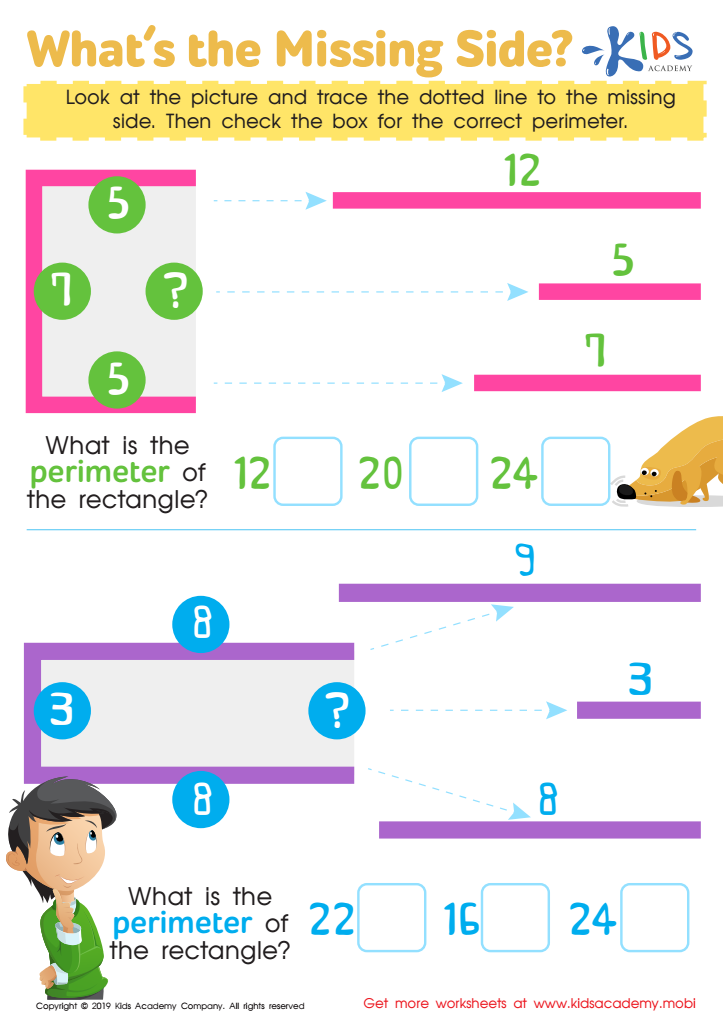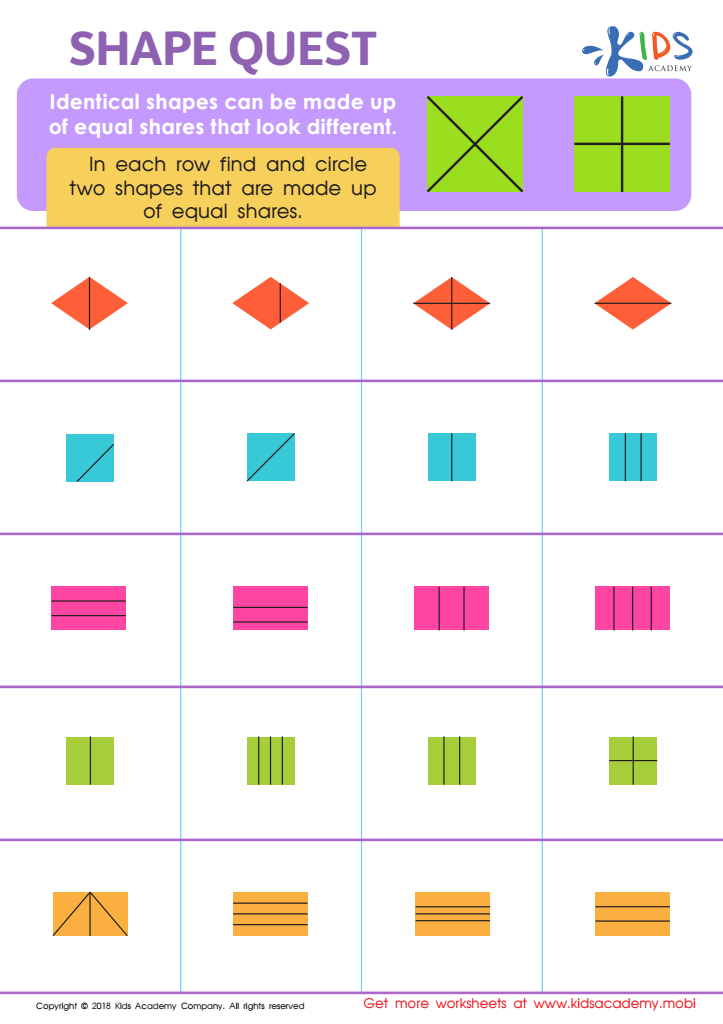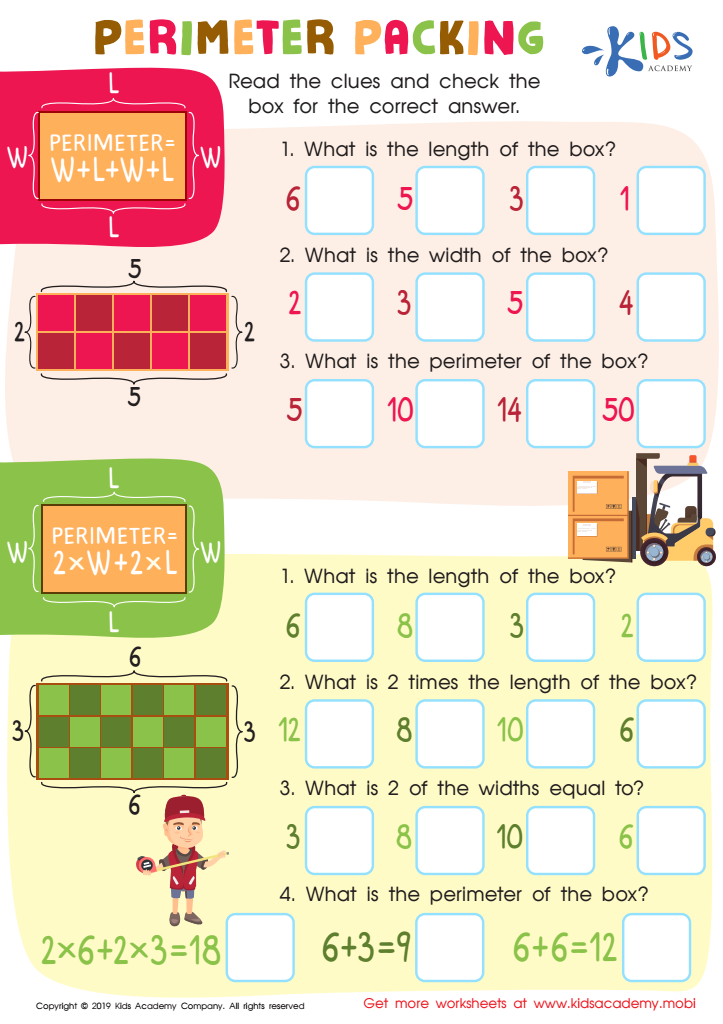Problem-Solving Skills Normal Geometry Worksheets for Ages 8-9
3 filtered results
-
From - To
Discover our engaging Problem-Solving Skills Normal Geometry Worksheets tailored specifically for children aged 8-9! These worksheets aim to boost mathematical understanding through fun and interactive geometry challenges. Designed for young learners, they enhance critical thinking and problem-solving abilities while covering key concepts such as shapes, angles, and symmetry. Each worksheet progressively introduces geometrical principles, providing varied complexity to suit different skill levels. Perfect for classroom use or at-home practice, our resources foster a solid mathematical foundation while encouraging a love for learning. Empower your child’s problem-solving skills in geometry today with our thoughtfully crafted worksheets! Explore now for endless math fun!


What's the Missing Side Worksheet


Shape Quest Worksheet


Perimeter Parking Worksheet
Problem-solving skills in normal geometry are critical for children ages 8-9 as they form the building blocks for mathematical understanding and critical thinking. At this age, children start to grasp fundamental geometric concepts such as shapes, angles, and spatial reasoning. Developing problem-solving skills in this context allows students to learn how to approach challenges systematically, make connections between different mathematical ideas, and enhance their ability to think logically.
For parents and teachers, fostering these skills is essential because they impact a child's overall cognitive development. Children learn how to analyze problems, communicate their ideas, and explore multiple solutions, which can build a strong foundation for more complex mathematics in the future. Additionally, these skills help students build confidence and resilience, encouraging a growth mindset when faced with challenging tasks.
Engaging children through interactive activities like puzzles, hands-on projects, and real-world applications of geometry can make learning enjoyable while reinforcing these critical competencies. Parents and teachers can play a pivotal role in this process by providing support, positive reinforcement, and opportunities for exploration, ensuring that children appreciate the relevance of geometry in their daily lives and future academic pursuits.
 Assign to My Students
Assign to My Students






























